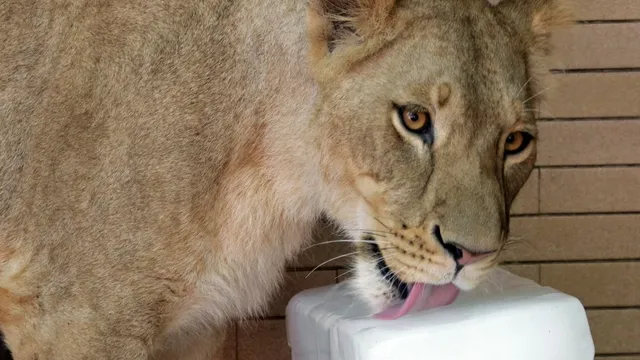
Lion owner arrested after pet attacks woman and children in Lahore
2025-07-07 07:28- A pet lion escaped its enclosure and attacked a woman and two children in Lahore, Pakistan.
- The victims were hospitalized, and local police arrested the lion's owners for their negligence.
- This incident raises concerns about public safety and the regulation of exotic pet ownership in urban areas.
Express your sentiment!
Insights
In Lahore, Pakistan, a pet lion escaped from its enclosure on the night of July 3, 2025, leading to serious injuries for a woman and her two young children. The incident occurred when the lion jumped over a boundary wall and pounced on the unsuspecting victims on a busy street. CCTV footage captured the moment the lion attacked, as it grabbed the woman and clawed at her children, aged 5 and 7, who were nearby. Emergency services quickly responded, transporting all three victims to a local hospital for treatment where they were reported to be in stable condition. Following the attack, Lahore police acted swiftly, arresting three individuals, including the lion’s owners, who allegedly remained passive during the attack, showing no intent to intervene. The lion, a male approximately 11 months old, was eventually recaptured by wildlife authorities and relocated to a wildlife park. The arrests come amidst governmental efforts to crack down on illegal ownership of big cats in Punjab, where having exotic pets has become a status symbol. This incident echoes a larger issue in Pakistan regarding the ownership of wild animals, which raises questions about public safety and legal compliance surrounding wildlife regulations. The Punjab government has been working to enforce stricter laws concerning the ownership and care of wild animals, particularly following previous incidents involving lion escapes. The province aims to ensure that ownership is regulated and that owners comply with safety protocols designed to protect the public. The incident has sparked discussions in both local and international communities regarding the ethics of maintaining wild animals as pets, particularly in densely populated urban areas. The consequences of this event may lead to stricter enforcement of wildlife ownership regulations, affecting many individuals who keep exotic animals as pets. Overall, this attack not only underscores the risks associated with keeping such animals in residential areas but also highlights the ongoing debate about animal welfare and public safety in regions where wildlife ownership is prevalent. As investigations continue, authorities are expected to review existing laws to prevent similar incidents in the future and hold accountable those who violate wildlife regulations.
Contexts
Recent years have witnessed an alarming rise in incidents of wild animal attacks in urban areas, bringing forth concerns about public safety and wildlife management. Urbanization continues to encroach upon natural habitats, resulting in increased interactions between humans and wildlife. This phenomenon has led to a range of incidents, from minor encounters to serious attacks, highlighting the urgent need for comprehensive management strategies to reduce such conflicts. Animals such as coyotes, bears, and even alligators have ventured into urban environments seeking food, shelter, and territory. The reasons for these incursions include food scarcity in natural habitats, urban sprawl, and availability of easily accessible food sources such as garbage, pet food, and outdoor dining areas. These factors have contributed to a shift in wildlife behavior, leading them to adapt to urban settings. Public awareness campaigns are increasingly essential to educate residents on securing trash, avoiding feeding wildlife, and reporting sightings to help mitigate risks. In the past year alone, numerous incidents have been reported across multiple cities, ranging from attacks on pets to aggressive encounters with humans. Consequences of these attacks can be severe, resulting in injuries, psychological trauma, and necessitating the euthanasia of animals that pose a threat. Additionally, local governments face the challenge of balancing public safety with the conservation of wildlife species. Efforts to manage wildlife populations in urban areas include relocation programs and habitat restoration, yet these methods remain contentious among conservationists and the community alike. To address this increasing trend of wild animal attacks, a multi-faceted approach is vital. This includes enhancing urban planning to maintain wildlife corridors, promoting coexistence strategies, and ensuring public education regarding wildlife behavior. Stakeholders such as wildlife agencies, urban planners, and community members must collaborate to develop comprehensive policies that protect both the human population and the wildlife that inhabits these increasingly shared environments. Only through such efforts can a safer coexistence be achieved, minimizing the risks associated with wild animal encounters in urban areas.